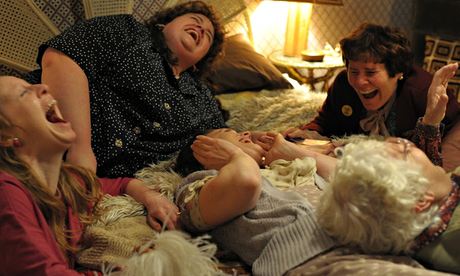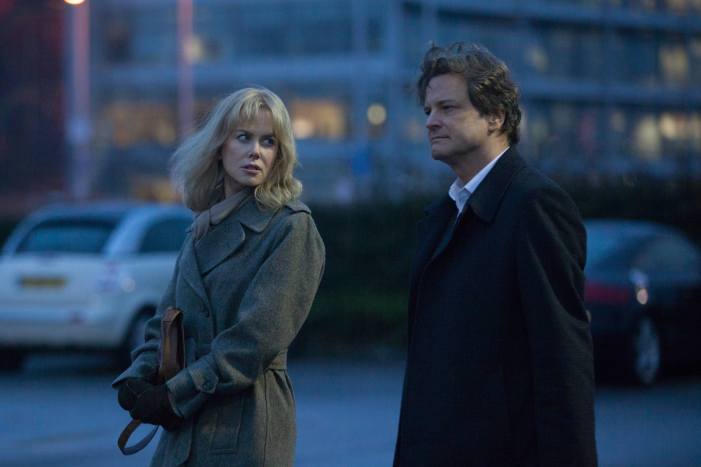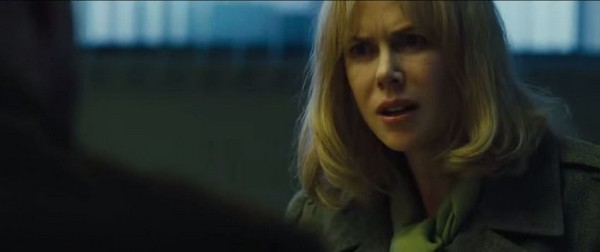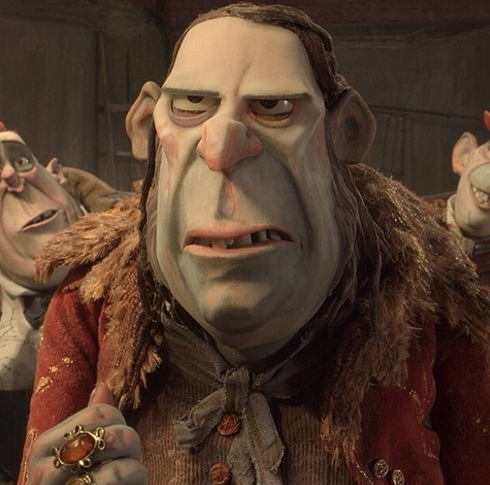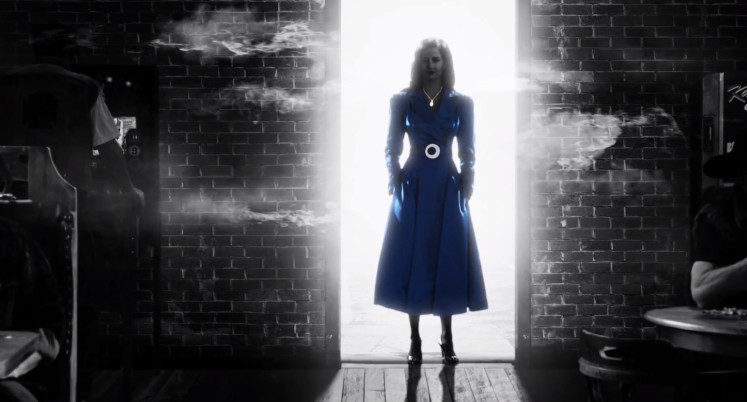It seems I’m a little late to the national Pride love in. I had intended to review Matthew Warchus’ new issue-rific Brit flick last week but a malfunction in my brain lead to me getting the time of the showing wrong and then punished me by making me see ‘Before I Go to Sleep’ instead. In the intervening week I’ve had numerous friends tell me how inspirational and moving Pride is, piquing my interest significantly before finally seeing it today. The film that greeted me was very much the film I had expected; a button pressing wash of quality British actors, evocative scenery and heart felt sentiment. Regardless, in spite of the undoubted effectiveness of the movie, the question I can’t help but ask is: is Pride successful because of the execution of its themes and narrative or just due to the emotive nature of those topics?
The events of Pride occur during the miner’s strike of 1984 placing it firmly in the commercially and critically successful company of Thatcher baiting films like Billy Elliot and Brassed Off. It concerns a group of homosexuals in London who, recognising solidarity with the miners over their dreadful treatment by the government, form a group to raise money for the union of a small Welsh town during the strikes. The meat of the story relates to the acceptance or otherwise of the Welsh villagers to their unlikely benefactors and the effect that both groups have on the other’s lives. One undoubted feather in Pride’s cap is the fact that its story has its basis in real life people and events. Of course, anyone with a broader knowledge of this part of British history will know how the strike turned out but in many ways the film is less concerned with the politics of the time than it is with examining the pointlessness of prejudice in general.
One of the most initially striking things about Pride has to be its cast. Warchus and his capable screenwriter Stephen Beresford have attracted an impressive gaggle of thesps of all ages and levels of notoriety and the vast majority do a very good job. The ever dependable Paddy Considine is warm and spirited as the union rep Dai, Bill Nighy gives a delicately observed, uncharacteristically understated performance as retired Cliff, Imelda Staunton is pin sharp and funny as matriarch Hefina and Dominic West turns on his flamboyance as the louche actor Jonathan. In fact, the extreme breadth of talent on display can occasionally work against Pride’s favour. A definite issue of the film is the flattery of riches it offers; there are so many interesting characters and sub-plots stuffed into its two hour runtime that the focus occasionally gets spread a little thin. A good example of this is Andrew Scott’s Gethin. One of my favourite characters; Gethin’s story runs parallel to the main narrative and features his coming to terms with the Welsh upbringing he had to leave behind when he came out and fled to London. Scott turns in an exquisitely nuanced performance which in many ways should be the heart of the movie, unfortunately his strand feels edited and channelled to make way for more characters and sub-plots. Although such a large cast is not detrimental in itself, I do feel that a tighter focus could have benefited the overall effectiveness of the film.
When it comes to the telling their tale Warchus and Beresford rarely put a step wrong. Whilst not offering many unexpected developments, the culture clash story contains all the visceral highs and lows you may expect of the genre but does so in a way which feels slightly more honest than simply ticking the boxes of an emotional check list. There is a rather curious anomaly between the subject matter and presentation of its themes on the screen, by which I mean that the film is actually quite chaste when it comes to portraying its homosexual characters. Considering the message is “we’re all the same regardless of who we’re sexually attracted to”, the gay men are portrayed with a degree of coyness that doesn’t necessarily ring true. Granted, I wasn’t expecting to see the tempestuous frotting of ‘Weekend’ but when the kiss of a heterosexual peripheral character gets more screen time than the first gay kiss of one of the leads then I have to ask if slightly hypocritical concessions were made at the alter of higher box office returns. I also found that the film’s lesbian characters were, on the whole, not treated with the same sensitivity as the gay men; falling more into easy stereotypes and fulfilling the role of walking punchlines.
I suppose that ultimately one has to judge a film like this based on the emotions it evokes and on those terms Pride flies. It is highly successful in presenting its tale in a way which has one leaving the cinema with damp eyes and a beaming heart. I do still wonder if the emotional effectiveness of the film had more to do with seeing my own liberal political leanings writ large on the screen as opposed any great skill on behalf of the director but in the end it doesn’t really matter. Issue lead films live or die on their ability to make audiences empathise with and relate to their characters’ struggles and Pride achieves this with wit and charm. It may have been preaching to the choir but Pride was the first film I’ve seen in years which had a British audience applauding at its finale, something to be proud of indeed.
I give Pride eight Pauls out of Critoph

